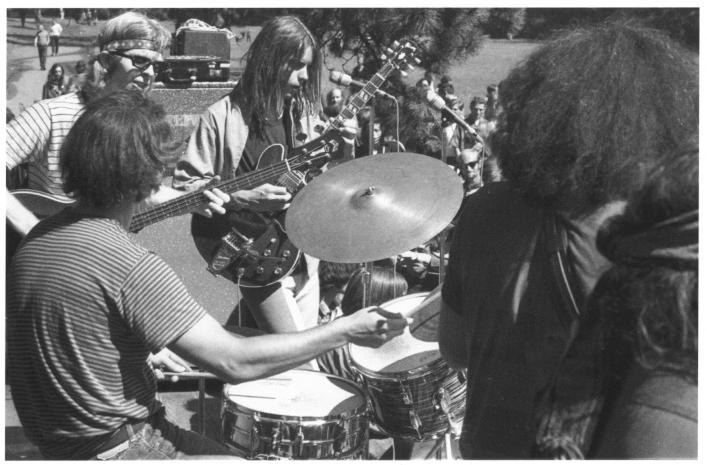My parents met at a Grateful Dead concert. I came out of the womb destined to say mildly obnoxious things like, “I only listen to oldies” or “Mick Jagger is my spirit animal.” Thus, my investment in the long-lasting success of rock runs deep.
Pop rock has become synonymous with rock and dominates the mainstream. Anything defined as rock before 2000 is now colloquially referred to as “dad rock” — the music middle-aged men bob their heads to while holding beer and reminiscing about Woodstock and vinyl.
Rock used to be the soundtrack to angsty teenage rebellion. It was the music blaring when you hid in your room, pissed at the world, and the sound kids moshed to at concerts. But it doesn’t make sense for kids to rebel to the same song as their parents, so the edgy sound of performers has to evolve. Classical music was once seen as a defiant new art form, but with time comes acceptance. As rock became more popular, and the kids listening to it grew up, it’s hard edges softened, paving the way for new artists who rap or DJ. These days, if teens are blasting music and complaining that their parents don’t get them, they’re likely listening to Kendrick Lamar or Cardi B. So what is it about new music that has young people leaving rock in the past?
Producers of this decade pack as much punch as possible. Digital recording allows them to turn up the volume without destroying the clarity. Instead of just drums, a guitar and keyboard, modern tracks are jam-packed with synth, the creative input of several producers and need to fill dance halls. A Beatles song, no matter how loud, won’t make your car vibrate or turn into the mind-numbing, hip-shaking sound we’ve come to expect at parties. Electronic dance music, a popular genre, is made to be played at full volume and to get people on their feet. EDM and other pop songs go through extensive rounds of editing until they’re filled with digitally created energy, enough to rouse any listener. Does Super Bass inspire a love for raw, emotional artistic expression? No, but it’ll still get me onto the dance floor every time.
Music critics have hailed Harry Styles as rock’s savior. Rolling Stone awarded him Top Song of 2017 for “Sign of the Times,” not only calling him a rock star but also referencing David Bowie and Queen, a quick and slightly desperate comparison. From his debut album, a 10-track-trip through fun retro homages and enthusiastic vocals, it’s obvious Styles loves rock, but what rock needs isn’t another trip down memory lane — it’s a reinvention.
What would modern rock anthems sound like? How would they balance being rough and rowdy like their predecessors, while still clean and focused like contemporary sounds? How could rock embrace new multimedia formats of music? What would a modern rock star look like?
Perhaps Styles will step up soon. A rock star born from reality television would be very fitting for 2018. Or maybe some other young person we haven’t heard of yet, an overnight sensation like that yodeling kid from Walmart.
There’s something sexy about rock, something alluring that’s kept it in the social consciousness. That je ne sais quoi is enough to catapult rock onto the main stage, provided it finds a contemporary way to reclaim its wild youth.
Email Sophie Lee at [email protected].






















































































































































